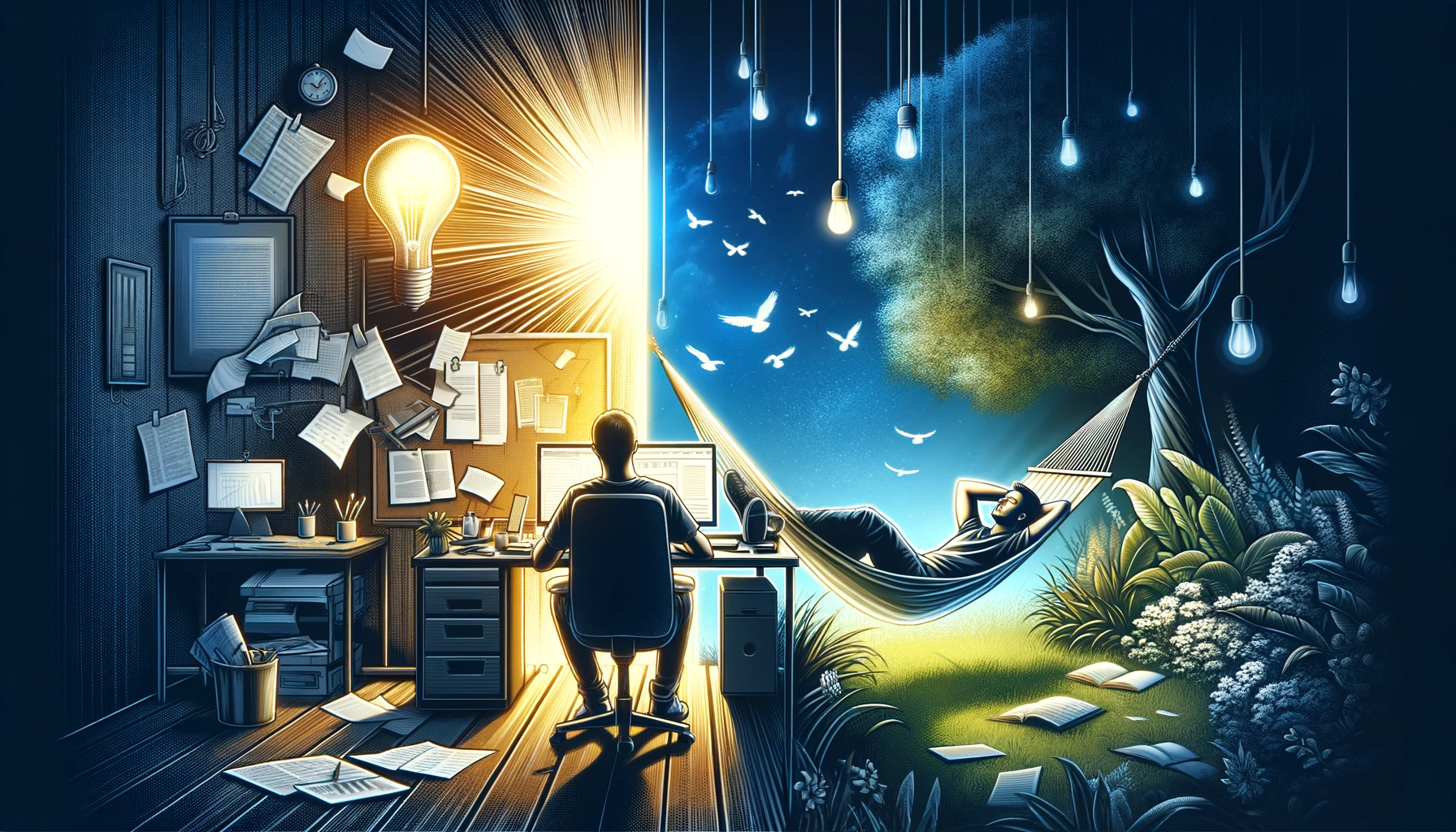How to Balance Your Inner Slacker With Getting Things Done
It’s a familiar scenario: you’re lounging on the couch, contemplating a seemingly endless to-do list. Yet, despite your best intentions, the lure of doing nothing feels overwhelming. This internal tug-of-war between wanting to kick back and needing to tackle tasks is a struggle almost everyone faces. So, how do you find the right balance? How can you cater to your inner slacker without sacrificing productivity?
1. Meet Your Inner Slacker
First, let’s define what we mean by an “Inner Slacker.” This isn’t just laziness but a part of you that demands ease and relaxation. It’s important to recognize that everyone has this side—it’s a natural response to our often over-stimulated, overworked lives.
Understanding why you procrastinate is crucial. It might be due to a fear of failure, not feeling up to the task, or simply because the task at hand feels mundane. Identifying these triggers can help you address them directly, turning inaction into action.
2. The Science Behind Productivity
Productivity isn’t just about doing more; it’s about strategically using your time. Embracing popular methodologies like David Allen’s “Getting Things Done” can offer a structured approach to managing tasks efficiently. This method breaks down overwhelming projects into actionable items, making them less daunting.
Moreover, completing tasks positively impacts your mental health, boosting feelings of competence and reducing stress. This doesn’t just improve your work output but enhances overall life satisfaction.
3. Practical Strategies to Kickstart Motivation
Knowing you need to balance relaxation with responsibility is one thing; implementing it is another. Here are some effective strategies:
- Setting Achievable Goals: Utilize the SMART Goals framework—Specific, Measurable, Achievable, Relevant, and Time-bound—to outline what you need to accomplish. This clarity can spur motivation.
- Time Management Techniques: Tools like the Pomodoro Technique and the Eisenhower Box can dramatically increase productivity. These methods help prioritize tasks and break your workday into focused intervals, interspersed with short breaks to recharge.
- Embracing Mindfulness: Mindfulness techniques can help keep your focus sharp and your mind less susceptible to distraction. Simple practices like guided breathing or meditation can clear your thoughts and prepare you for tasks.
4. Finding Your Balance
True productivity comes when you effectively balance your work and leisure without feeling guilty about taking time off. Here are some tips:
- Integrate leisure activities into your daily schedule. This isn’t slacking off; it’s essential to maintaining your mental health.
- Be realistic about what you can achieve in a day. Overloading yourself can lead to burnout while underloading can foster guilt.
- Use technology wisely—tools like Trello, Asana, and Todoist can help keep you organized and ensure that work and relaxation time are respected.
Balancing your inner slacker with getting things done is about self-awareness and smart strategy. By understanding and managing your needs for rest and productivity, you can create a fulfilling, balanced routine that caters to both without sacrificing one.
5. Maintaining Your Momentum
Maintaining this balance after establishing a routine that respects productivity and relaxation is challenging. Changes in lifestyle, workload, or personal interests can disrupt even the most well-planned schedules. It’s essential to periodically reassess your goals and the effectiveness of your time management strategies.
Stay motivated by celebrating small wins along the way. Acknowledging your progress can provide a significant psychological boost, no matter how minor. This practice helps to maintain motivation over time, reinforcing the positive habits you’ve developed.
6. Preventing Burnout
Burnout is a real risk when trying to juggle multiple responsibilities. To avoid this, heed the signs of overexertion and learn when to step back. Effective burnout prevention strategies include setting clear boundaries for work and rest, knowing your limits, and not being afraid to say no when necessary.
Integrating relaxation and mindfulness into your daily routine can also play a critical role in burnout prevention. By ensuring you’re not always on, you allow your mind and body to recharge, preparing you for more productive periods without the risk of mental fatigue.
Bringing It All Together
Initially, we explored the struggle between the need to relax and the drive to be productive. Understanding and implementing the strategies discussed, you can navigate this balance more effectively, leading to a more satisfied and successful life. Remember, productivity isn’t just about crossing items off a checklist; it’s about making progress in a way that sustains your mental and physical health.
As you refine your approach to balancing productivity with relaxation, consider how each change impacts your happiness and satisfaction. Sometimes, the best way to be productive is to give yourself the space to be unproductive. Embrace these moments of rest as essential components of your success.
Questions to Consider
- What main triggers lead you to procrastinate, and how can you address them more effectively?
- How can implementing time management techniques like the Pomodoro Technique or apps like Trello change your daily productivity?
- How might you better integrate mindfulness into your daily routine to enhance productivity and downtime?


